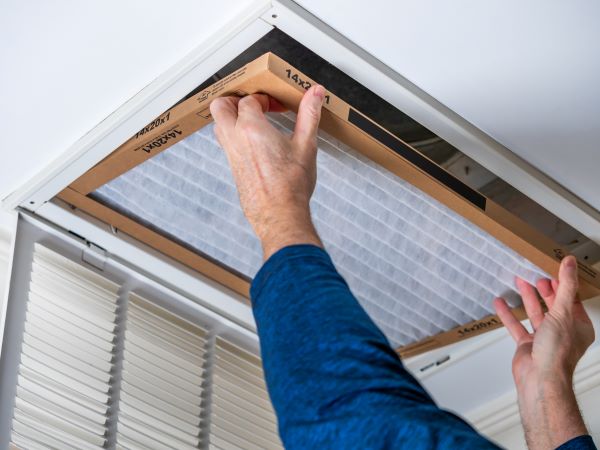During the winter, your furnace works tirelessly to keep the bitter cold at bay, helping your family stay comfortable regardless of the temperature outdoors. If you’ve neglected your furnace maintenance during the rest of the year, however, you may notice your energy bill beginning to creep up. You may also discover that your furnace, even if it’s a newer, more advanced model, is struggling to keep certain areas in your home at your preferred temperature. When this happens, it’s most likely due to decreased energy efficiency in the furnace itself, and the home in general.
While your furnace may have the most work to do in the winter, it’s actually the warmer months that are the most crucial for its effective operation. It’s at this time that you can focus on critical repairs and upgrades that will keep the furnace functioning optimally all year long. This will save money on your energy bill and help prevent the need for expensive emergency repairs when you need home heating the most: in the winter.
In this article from All Weather Heating & Cooling, we’ll offer a few smart tips for what you can do throughout the year to keep your furnace operating efficiently. This will help reduce energy costs and lead to fewer repair bills.
1. Keep the Filters Clean
Your HVAC system circulates the heat it generates throughout your home. In most traditional central heating systems, this is done using a large fan that pushes the air through the ducts. As the air circulates, it picks up dust, dirt, mold, and other pollutants. Air filters in the system catch these impurities and help keep the air clean by preventing debris from being blown back into the home.
Over time, however, as they catch dust and dirt, air filters become less efficient. This can force your furnace to work harder, putting undue strain on the machinery, and introducing pollutants into the air you breathe.
Your HVAC technician will clean or replace your filters as a part of your regular furnace maintenance. You can do so more often if needed.
2. Check the Electrical Connections
Most furnaces generate heat by burning some sort of fuel source (natural gas in most cases or sometimes propane or oil). However, they also depend on electricity, utilizing it to cycle the unit on and off until the desired temperature is reached.
Your furnace uses several important electrical connections to operate, the most notable one being the thermostat. You use this device to set the heating system to your preferred temperature. Sometimes, however, a faulty electrical connection can cause the thermostat to fail to communicate with the furnace effectively. When this occurs, the furnace may cycle on for longer than it needs to or cycle on and off in short spurts, wasting energy.
There is also an electrical connection between the furnace and the blower motor. A bad connection here can prevent heated air from circulating properly, meaning that energy will also be wasted, as it cannot effectively reach the rooms in the house.
Regular inspection and repair of your furnace’s electrical connections will help ensure it continues operating efficiently, saving energy costs over time.
3. Seal Any Leaks
Because an effective HVAC system depends on the flow of heated air, any points where air can escape can reduce the system’s overall efficiency. Often, these leaks occur within the ducts themselves, as the continuous airflow can create wear and tear that will compromise any weak points.
Beyond the ductwork, air leaks can occur in the insulation of the building itself, especially in the seals around windows and doors. If heat energy is allowed to escape in this manner, your furnace will have to work harder to compensate for the loss. As a result, you will have to use more fuel to keep the home at the same temperature, increasing your energy bill.
As part of your regular furnace maintenance, your HVAC contractor should inspect both ductwork and the insulation in your home and seal any leaks.
4. Make Sure Your Burners Are Clean and Clear
As we’ve mentioned, most furnaces utilize fossil fuels to generate heat, either in gas or liquid form. In either case, the fuel is pumped into a combustion chamber where a burner heats it until it releases its potential energy in the form of heat. Each time fuel is burned, however, it leaves behind residue. This builds up over time and can eventually restrict the flow of the fuel source. When this happens, it reduces the overall energy efficiency of the furnace itself.
Your year-round maintenance program should include the occasional cleaning of your furnace’s burners to ensure the effective flow of fuel.
5. Ensure You Have Proper Ventilation
As your furnace burns fuel to generate heat, it creates byproducts, including potentially harmful (and invisible and odorless) carbon monoxide. This gas must be safely ventilated outside the home, or it may place the inhabitants at risk.
When your HVAC professional installs your furnace, they will install a pathway for toxic byproducts to escape outside the building. Over time, however, these vents may become dirty or otherwise blocked. Plant growth outside the building can also block vents.
For safety reasons, your HVAC professional should regularly ensure your furnace is properly ventilated. They should also check the carbon monoxide alarms in the home to add a further layer of protection for its inhabitants.
To schedule your year-round furnace maintenance, contact All Weather Heating & Cooling today. We will go down a checklist including the above items, and others, to ensure your HVAC system is functioning optimally all year.

